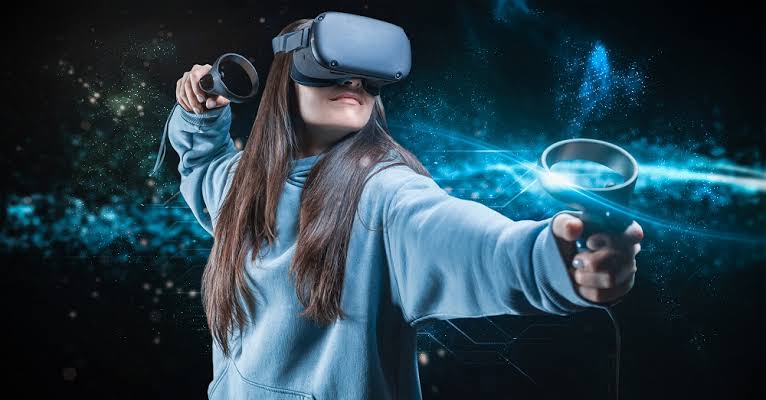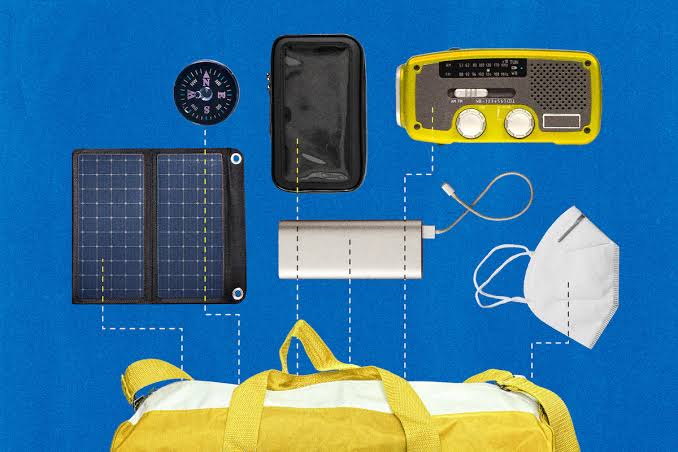Virtual reality (VR) has grown from a small idea into a powerful technology changing how we enjoy entertainment, communicate, and learn. It used to be seen only as a tool for gaming, but now VR is used in many fields like healthcare, architecture, tourism, and especially education. The global VR market is expected to pass $120 billion by 2025, making it important for both everyday users and professionals.
As of July 2025, advancements in VR hardware, content delivery, and AI-driven interactivity are pushing the boundaries of what’s possible. From hyper-realistic gaming experiences to fully immersive classrooms, VR gadgets are no longer just futuristic gadgets—they’re tools actively redefining how we learn, play, and work. This article takes an in-depth look at the future of VR gadgets and how they are transitioning from gaming to the broader world of education and beyond.
Evolution of VR Gadgets in the Gaming Industry
Gaming remains the primary driver behind the widespread adoption of VR technology. Since the release of early VR systems like the Oculus Rift and HTC Vive, the gaming industry has consistently embraced innovation to create immersive worlds and lifelike interactions. Today’s VR headsets, such as the Meta Quest 3, Sony’s PlayStation VR2, and the Apple Vision Pro, offer advanced motion tracking, eye movement detection, haptic feedback, and ultra-high-definition visuals that make virtual environments more believable than ever.
By July 2025, cloud gaming and 5G integration have made it easier for gamers to enjoy high-performance VR titles without expensive PCs or consoles. Many VR gadgets now support wireless gameplay with minimal latency, while new platforms allow users to interact socially inside games in ways that blur the line between real and virtual. Gamers are no longer just playing—they’re stepping into entire digital universes, engaging with players around the world in real-time 3D environments.
VR as a Tool for Immersive Education
Perhaps the most exciting frontier for VR gadgets is education. With advancements in content development, hardware affordability, and AI-powered learning platforms, virtual reality is revolutionizing the way we teach and learn. Classrooms are no longer confined to four walls. Instead, VR allows students to travel through ancient Rome, explore the structure of human cells, or simulate complex physics experiments—all from the comfort of their homes or schools.
Educational institutions in countries like the United States, South Korea, the United Kingdom, and Nigeria are increasingly adopting VR platforms for teaching science, history, languages, and vocational training. Companies like ClassVR, Immersive VR Education, and Google Expeditions are leading the charge, creating virtual learning environments that promote engagement and deep understanding.
By July 2025, several universities have developed fully virtual campuses, where students attend lectures, interact with peers, and even conduct practical work in virtual laboratories. This is especially beneficial for remote or underserved regions, where VR can bridge the gap caused by lack of infrastructure or teaching staff.
The Role of Artificial Intelligence in VR Development
Artificial intelligence is playing a critical role in advancing VR gadget capabilities. AI algorithms now enable more realistic virtual avatars, responsive environments, and personalized learning experiences. For instance, in a VR classroom, an AI-powered tutor can adapt the difficulty level of a lesson in real time based on a student’s performance or even emotional feedback.
In gaming, AI enhances NPC (non-player character) behavior, making interactions more lifelike and unpredictable. This creates a level of immersion that was impossible a few years ago. AI is also enabling voice recognition and natural language processing within VR, allowing users to interact with virtual environments using speech, gestures, or even eye movements.
By mid-2025, most high-end VR gadgets are integrated with AI systems that optimize performance, personalize user experiences, and analyze data to improve future interactions. This convergence of VR and AI is making the virtual world more intuitive, responsive, and human-like.
Health, Therapy, and Social Interaction Through VR
Beyond gaming and education, VR is becoming a powerful tool for therapy, mental health, and social engagement. Psychologists now use VR-based exposure therapy to treat phobias, PTSD, and anxiety disorders. Patients can be safely exposed to their triggers in controlled virtual settings, allowing gradual desensitization and recovery.
Physical therapists are using VR games to make rehabilitation exercises more engaging and effective, while seniors are using VR headsets to revisit places from their past or interact with family members across distances. In 2025, virtual support groups and therapy sessions conducted inside immersive VR spaces are becoming a common approach in mental health care.
Social VR platforms like VRChat and Horizon Worlds are also growing rapidly, offering spaces where people can meet, talk, play, and collaborate. These platforms have matured into thriving communities with their own rules, economies, and social norms, offering a fresh layer of digital interaction that extends beyond what social media traditionally offers.
Portability and Affordability of Next-Gen VR Gadgets
A major factor influencing the future of VR is the increased portability and affordability of the gadgets themselves. While early systems required bulky headsets and expensive computers, the current generation of devices are lighter, standalone, and cost-efficient. Meta, Apple, Lenovo, and Pico have released models under $500, making VR more accessible to the mass market.
Advancements in lightweight materials, improved battery life, and integrated processing units mean that users can now enjoy VR experiences without being tethered to a power source or PC. Foldable headsets, compact designs, and built-in LTE/5G connectivity make VR gadgets as easy to use as a smartphone or tablet.
In Nigeria and other developing countries, partnerships between educational NGOs and VR developers have introduced low-cost headsets powered by mobile phones, bringing immersive learning to schools that lack traditional infrastructure.
Challenges and Ethical Considerations
Despite its promise, the future of VR gadgets comes with challenges. Health concerns such as eye strain, motion sickness, and the psychological effects of prolonged immersion need to be addressed. Parents and educators worry about the impact of virtual isolation on children and students, while cybersecurity experts warn about potential privacy breaches in virtual environments.
As more people spend time in VR, ethical questions arise about consent, surveillance, data ownership, and digital identity. Governments and tech companies must develop clear regulations to protect users without stifling innovation. In July 2025, several nations are working on digital rights charters specific to immersive technologies, setting boundaries for how virtual data is collected and used.
Final Thoughts
The future of virtual reality gadgets is not just exciting—it’s transformative. As the technology matures, its application is rapidly expanding from entertainment to real-world problem solving. VR is no longer confined to the gaming world. It is now shaping how we learn, communicate, heal, and connect.
With AI integration, educational potential, and widespread accessibility, virtual reality gadgets are poised to become everyday tools across industries. But for this future to be fully realized, developers, regulators, and users must work together to ensure the technology is inclusive, safe, and ethically guided. As of July 2025, the journey of VR is only just beginning, and its possibilities are as limitless as the imagination itself.



